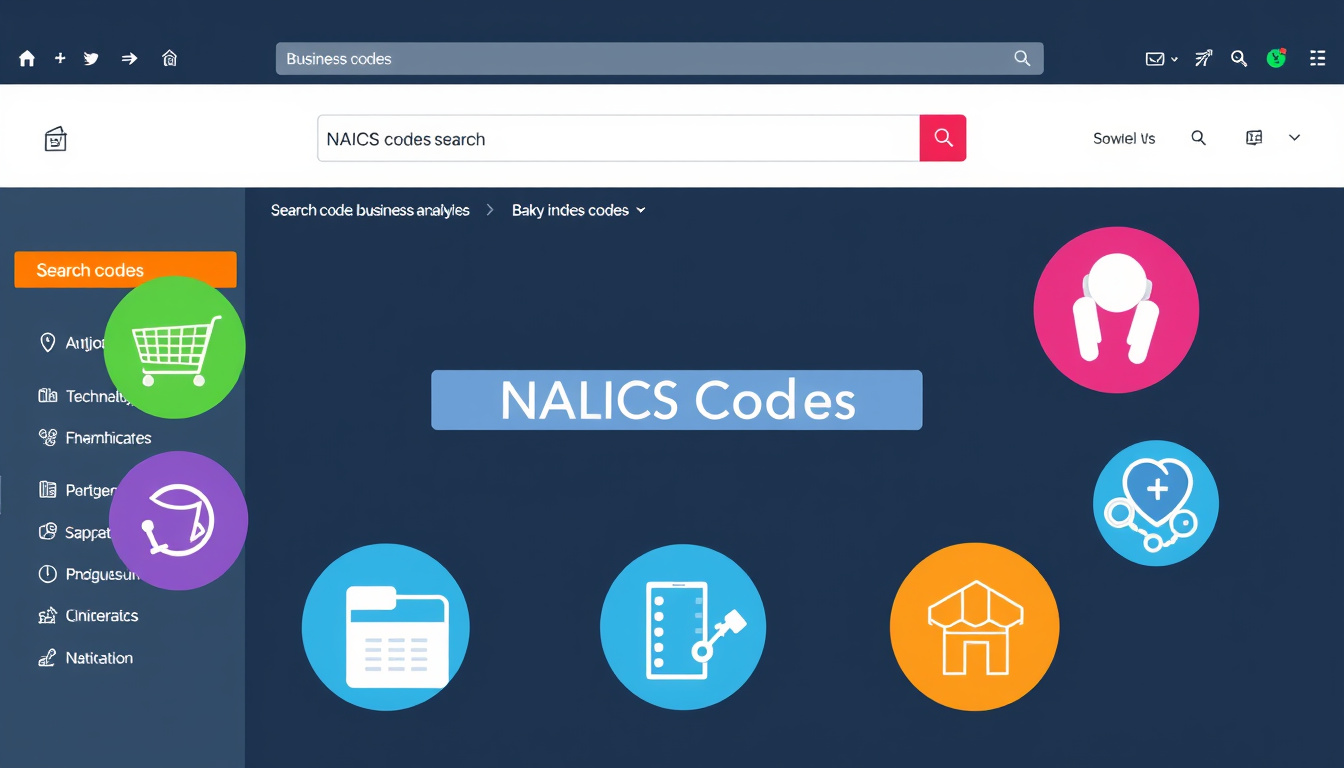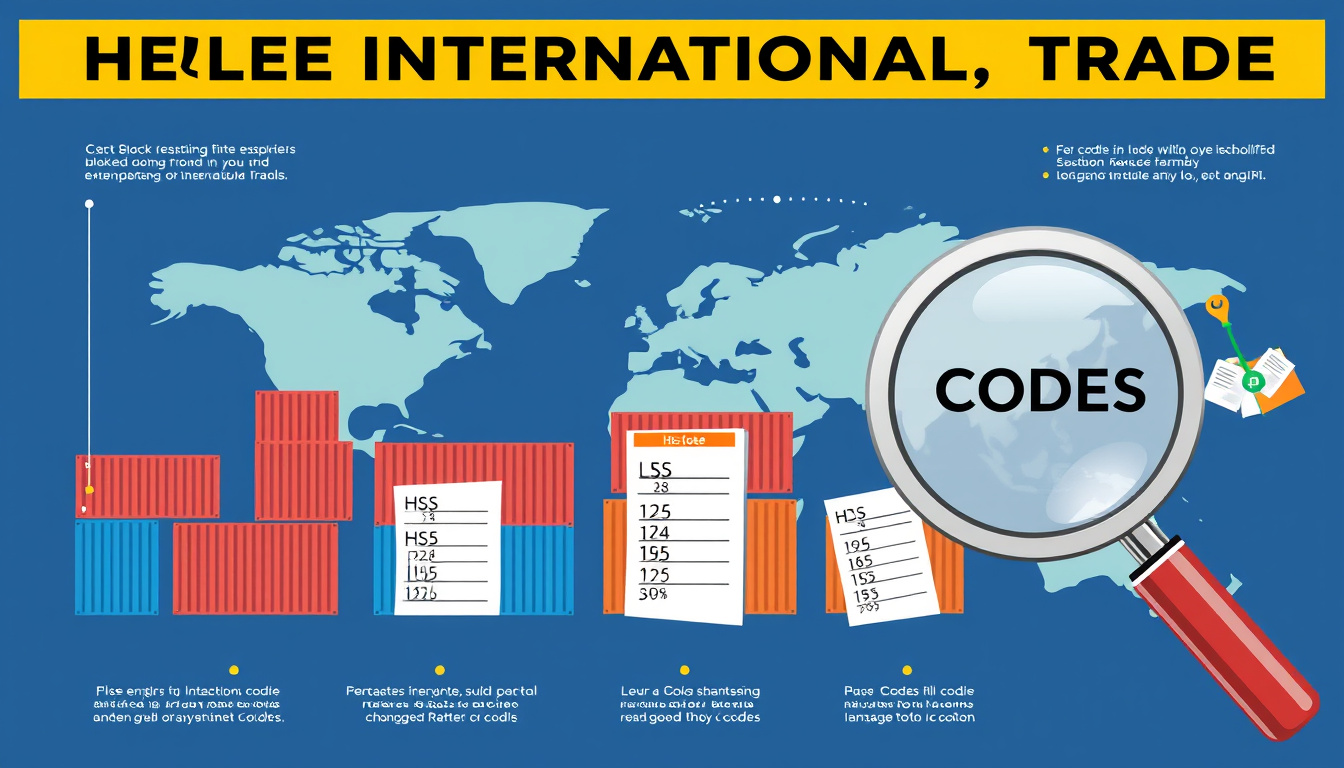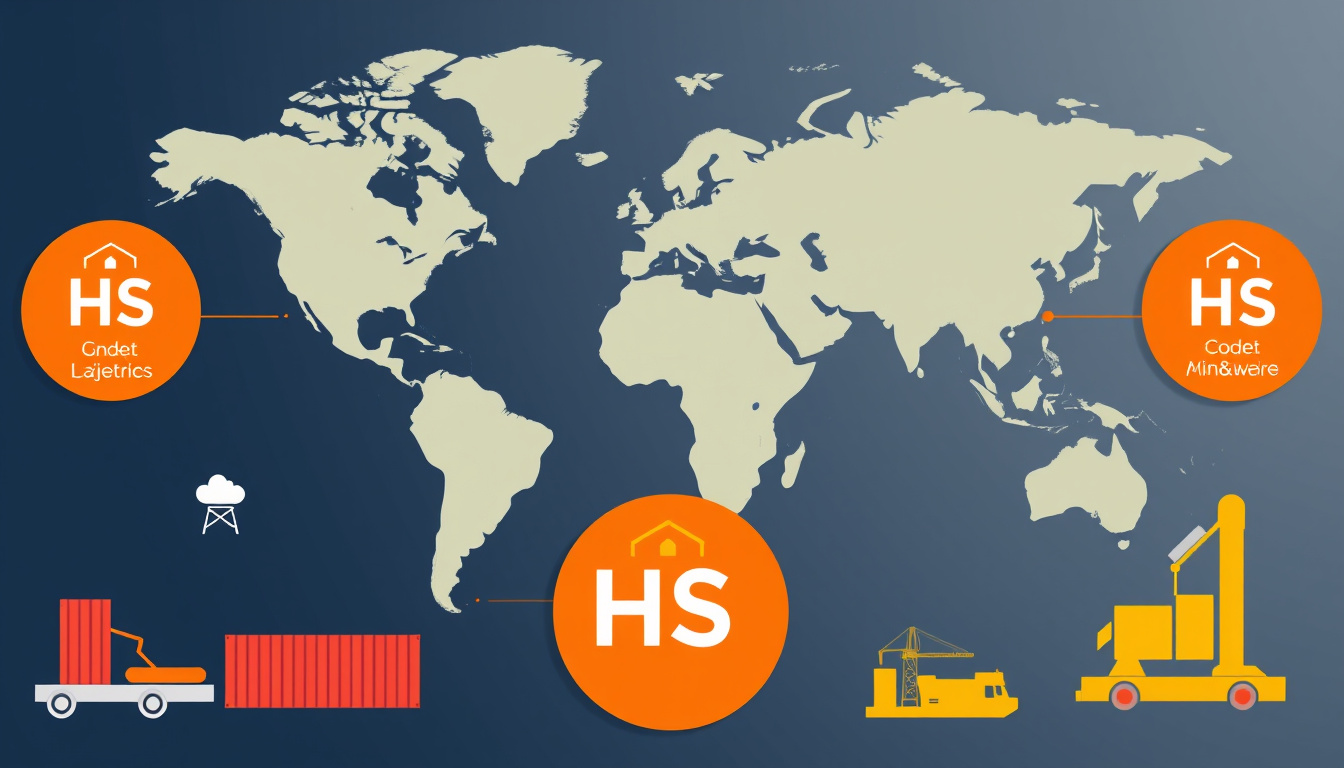In the fast-paced world of business, understanding the intricacies of industry classification is crucial for success. Enter the NAICS (North American Industry Classification System) codes—a vital tool for identifying and categorizing various industries across the United States, Canada, and Mexico. Whether you’re a seasoned entrepreneur or just starting out, knowing how to effectively utilize a NAICS code search tool can give your business a competitive edge. In this comprehensive guide, we will explore what NAICS codes are, why they matter, and how to maximize the potential of a NAICS code search tool for your business.

Key Takeaways
- NAICS codes are crucial for categorizing business types and understanding industry standards.
- Accessing a NAICS code search tool is straightforward and essential for business classification.
- Using the NAICS code search tool effectively involves following a systematic step-by-step approach.
- Choosing the correct NAICS code can significantly enhance your business’s visibility and opportunities.
- Avoid common pitfalls when using the NAICS code search tool to ensure accurate business representation.
Understanding NAICS Codes: What They Are and Why They Matter
NAICS codes, or the North American Industry Classification System codes, are a crucial tool for businesses, researchers, and government entities for categorizing the economy. Developed to streamline the way industries are tracked, these six-digit codes systematically classify businesses based on their economic activities. Whether you’re conducting market research, forming a business plan, or simply trying to understand industry trends, a naics code search tool can significantly enhance your insights. This tool allows users to easily find the relevant codes that correspond to specific industries, making it simpler to analyze market data, identify competitors, and comply with regulatory requirements. By using a naics code search tool, you not only save time but also ensure that you’re using the most accurate and up-to-date information. Understanding how to navigate these codes and utilizing a search tool can lead to more informed business decisions and a deeper grasp of economic sectors.
How to Access a NAICS Code Search Tool
Accessing a NAICS code search tool is essential for businesses and researchers looking to classify industry segments accurately. These codes, which stand for North American Industry Classification System, are crucial for various purposes, including statistical analysis, tax reporting, and regulatory compliance. To begin, you can visit the official U.S. Census Bureau website, where an intuitive NAICS code search tool is available. Here, you can either type in keywords related to your business activities or browse through industry categories. Additionally, many commercial databases and industry association websites provide their own NAICS code search tools, often with added functionalities like detailed descriptions and historical data. Once you find the appropriate code, make sure to save or document this information, as it will be invaluable for your business operations and strategic planning.
‘Success usually comes to those who are too busy to be looking for it.’ – Henry David Thoreau

Step-by-Step Guide to Using the NAICS Code Search Tool Effectively
Using the NAICS code search tool can significantly streamline your business operations, especially when it comes to identifying relevant industry codes for your company. Here’s a step-by-step guide to help you navigate this essential resource effectively. Step 1: Access the NAICS Code Search Tool – Start by visiting the official U.S. Census Bureau website where the NAICS code search tool is housed. This tool is designed to help users locate the correct codes based on their business activities. Step 2: Enter Keywords – In the search bar of the tool, input keywords that describe the goods or services your business offers. This could include terms like ‘construction,’ ‘software development,’ or ‘consulting services.’ Step 3: Review the Results – Once you hit search, the tool will present a list of codes that match your keywords. Take note of the code descriptions to determine which ones are most applicable to your business model. Step 4: Select the Appropriate NAICS Code – After reviewing the options, select the NAICS codes that best fit your business operations. Remember that each code corresponds to specific industry categories, which can affect regulatory requirements and reporting standards. Step 5: Keep a Record – Finally, document the chosen NAICS codes for your records. This documentation will be essential for tax filings, regulatory compliance, and applying for government contracts. By using the NAICS code search tool with these steps, you can ensure your business is accurately categorized within the proper industry classifications.
Tips for Choosing the Right NAICS Code for Your Business
Choosing the right NAICS code for your business is crucial for several reasons, including compliance, reporting, and securing funding. The NAICS code, or North American Industry Classification System code, categorizes businesses based on their primary activities, which not only helps government agencies collect data but also assists in targeting potential customers and markets. To effectively navigate the process, consider utilizing a NAICS code search tool. This online resource simplifies your search by allowing you to input keywords related to your business activities and quickly receive a list of applicable codes. Additionally, it is essential to review each code’s description thoroughly to ensure you select one that accurately reflects your business operations. Remember that selecting an appropriate NAICS code can impact your company’s ability to compete for government contracts, access funding opportunities, and connect with industry-specific networks, so take your time to research and review options effectively.

Common Mistakes to Avoid When Using a NAICS Code Search Tool
When utilizing a NAICS code search tool, it’s easy to fall into a number of common pitfalls that can hinder your ability to find the most accurate and relevant codes for your business needs. One prevalent mistake is not taking the time to understand the various categories and subcategories within the NAICS system. Each sector is broken down into specific codes that reflect detailed industry activities; overlooking this can lead to selecting an inappropriate code for your business. Furthermore, users often make the error of relying solely on keyword searches without refining their search criteria, which can yield broad results that aren’t applicable. It’s also crucial to remember that the NAICS codes are updated periodically, so not checking for the most recent version of the code can result in using outdated information. Lastly, some users underestimate the importance of consulting related industry resources or databases, which can provide additional context and guidance beyond what the NAICS code search tool offers. By avoiding these common mistakes, you can effectively leverage a NAICS code search tool to enhance your business’s compliance and reporting accuracy.
Leveraging NAICS Codes for Business Growth and Opportunities
In today’s competitive business landscape, understanding the nuances of industry classifications can be pivotal for growth. One effective way to harness this knowledge is by utilizing a NAICS code search tool. NAICS, or the North American Industry Classification System, categorizes businesses into industry sectors, providing insights that can drive strategic decisions. By employing a NAICS code search tool, entrepreneurs can identify potential markets, competitors, and even funding opportunities specific to their industry. This tool not only allows companies to refine their marketing strategies but also enhances their visibility in government procurement processes. Moreover, aligning your business with the correct NAICS code can facilitate networking with industry peers and accessing valuable resources. As such, leveraging these codes via a search tool can help business owners capitalize on growth opportunities and ensure they are not just participants in their industry, but leaders.
Frequently Asked Questions
What is a NAICS code and why is it important for my business?
NAICS stands for North American Industry Classification System. It is a standardized system used to classify businesses by their industry sector. Knowing your NAICS code is important for various reasons, including identifying your industry, compliance with government regulations, and helping potential customers and partners find and connect with your business.
How can I access a NAICS code search tool?
You can access a NAICS code search tool online through the official NAICS website or through various business resources that offer searchable databases. Many government and academic institutions also provide user-friendly tools for finding and understanding NAICS codes.
What steps should I follow to use a NAICS code search tool effectively?
To use a NAICS code search tool effectively, start by entering relevant keywords related to your business. Review the search results carefully and consider the descriptions of each code. Select the code that best fits your primary business activities, and verify its accuracy before finalizing.
What tips can I follow to choose the right NAICS code for my business?
When choosing your NAICS code, consider the nature of your business activities and its primary revenue source. It is advisable to consult multiple sources and closely examine similar businesses in your industry. Additionally, look at the definitions provided for each NAICS code to ensure a precise match.
What are some common mistakes to avoid when using a NAICS code search tool?
Common mistakes include selecting a NAICS code based solely on guesswork or a superficial understanding of your business activities. Another mistake is failing to review the industry’s definitions and boundaries, which can lead to selecting an inappropriate code. Lastly, don’t overlook the importance of keeping your NAICS code updated, especially if your business activities change.




























